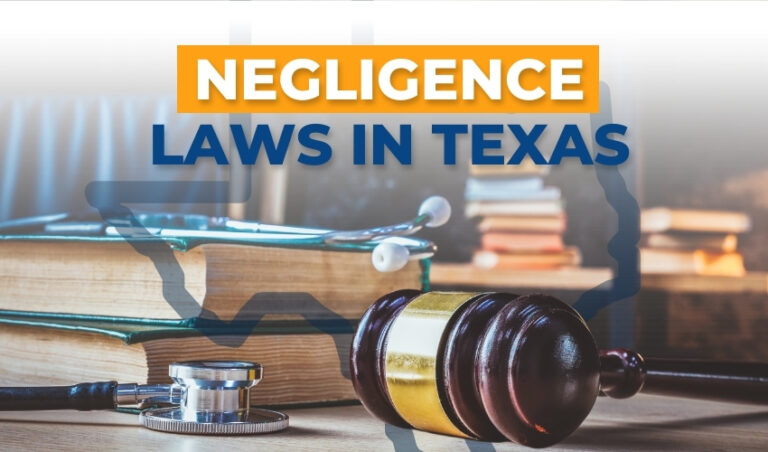Key Points:
- Texas follows a modified comparative negligence standard, known as the “51% bar rule,” which allows injured parties to recover damages as long as they are not more than 50% at fault for the incident.
- Establishing negligence in Texas requires proving four elements: duty, breach of duty, causation, and damages, with evidence playing a crucial role in building a strong case.
- The statute of limitations for most personal injury cases in Texas is two years from the date of injury, making timely action important for those seeking compensation.
In the bustling state of Texas, accidents happen every day. From fender benders on Houston’s busy highways to slip and falls in Dallas shopping malls, these incidents can leave victims facing physical pain, emotional distress, and financial hardship. At the heart of many personal injury cases lies the concept of negligence. As one of the most trusted Dallas injury law firms, we believe it is beneficial for Texans to understand the nuances of negligence laws in our state. This knowledge can help you protect your rights and navigate the complex legal landscape should you ever find yourself injured due to someone else’s carelessness.
What is Negligence in Texas Law?
Negligence, in its simplest form, occurs when someone fails to exercise reasonable care which results in harm to another person. However, proving negligence in Texas isn’t always straightforward. The Lone Star State follows a specific set of rules and standards that can significantly impact the outcome of a personal injury case.
In Texas, establishing negligence requires proving four key elements: duty, breach of duty, causation, and damages. First, the defendant must have owed a duty of care to the plaintiff. This duty varies depending on the situation – for instance, all drivers owe a duty of care to others on the road. Second, there must be a breach of this duty, meaning the defendant failed to act as a reasonably prudent person would in similar circumstances. Third, this breach must have directly caused the plaintiff’s injuries. Finally, the plaintiff must have suffered actual damages as a result.
The Unique Approach of Texas: Modified Comparative Negligence
One of the most distinctive aspects of Texas negligence law is its adoption of the modified comparative negligence standard, also known as the “51% bar rule.” This approach acknowledges that accidents are often complex events where multiple parties may share some level of responsibility. Under this rule, an injured party can still recover damages even if they bear some fault for the incident – as long as their share of responsibility doesn’t exceed 50%.
Here’s how it works in practice: Let’s say you’re involved in a car accident where the other driver ran a red light, but you were slightly exceeding the speed limit. The court might determine that the other driver was 80% at fault, while you were 20% at fault. In this scenario, you would still be eligible to recover damages, but your compensation would be reduced by your percentage of fault. So, if your total damages were $100,000, you would receive $80,000.
This system aims to strike a balance between fairness and accountability. It recognizes that minor mistakes shouldn’t completely bar recovery while still holding individuals responsible for their actions. However, please note that if you’re found to be 51% or more at fault, you’ll be barred from recovering any damages.
Types of Negligence in Texas Personal Injury Cases
While the modified comparative negligence standard applies broadly, Texas law recognizes several specific types of negligence that may manifest in personal injury cases:
- Ordinary Negligence: This is the most common type, involving a failure to exercise reasonable care under the circumstances.
- Gross Negligence: This involves a more severe departure from the standard of care, demonstrating a reckless disregard for the safety of others. In cases of gross negligence, punitive damages may be available.
- Negligence Per Se: This occurs when a person violates a safety statute, such as running a red light. The violation itself is considered evidence of negligence.
- Vicarious Liability: In some cases, one party may be held responsible for the negligent actions of another. For example, an employer might be held liable for the actions of their employee while on the job.

How Important Is Evidence in Texas Negligence Cases?
The strength and quality of evidence can significantly influence a case, specifically when dealing with the nuances of comparative fault. Key types of evidence in negligence cases often include:
- Accident reports and police records
- Witness statements and testimonies
- Photographic and video evidence of the accident scene
- Medical records and medical opinions
- Surveillance footage, when available
- Professional reconstructions of the incident
Each piece of evidence serves as a building block in constructing a compelling case. For instance, in a slip and fall case, photographs of the hazardous condition, maintenance records of the property, and testimony from other individuals who encountered the same hazard can all play crucial roles in establishing negligence.
The Texas Statute of Limitations
Time is of the essence in Texas negligence cases. The state imposes a statute of limitations, which sets a deadline for filing a lawsuit. For most personal injury cases in Texas, including those based on negligence, the statute of limitations is two years from the date of the injury. This means that if you don’t file your lawsuit within two years of the accident, you may lose your right to seek compensation altogether.
While two years might seem like a long time, building a strong negligence case often requires extensive investigation and preparation. Waiting too long to seek legal advice can result in lost evidence and faded memories which may weaken your case. That’s why we always advise individuals who believe they’ve been injured due to someone else’s negligence to consult with an attorney as soon as possible.
Navigating Insurance Companies and Settlements
In many negligence cases, dealing with insurance companies is an inevitable part of the process. Please keep in mind that insurance adjusters, while often friendly, are not on your side. Their primary goal is to minimize the company’s payout, which can sometimes conflict with your need for fair compensation.
Texas law recognizes this potential conflict and provides certain protections for injury victims. For instance, the state’s “Prompt Payment of Claims” statute requires insurance companies to act in good faith and handle claims in a timely manner. However, insurance companies may still use various tactics to reduce their liability, such as disputing the extent of your injuries or arguing that you bear more fault for the accident than you actually do.
This is where the assistance of a knowledgeable personal injury attorney can be valuable. An award-winning lawyer can handle communications with insurance companies to protect your rights and avoid statements that could potentially be used against you later. They can also help assess your claim which takes into account not just current medical bills and lost wages, but also future expenses and non-economic damages like pain and suffering.

Conclusion
While the legal landscape can be complex, knowing the basics of negligence law, the importance of evidence, and the value of high-quality legal representation can make a significant difference in the outcome of a personal injury case.
If you or a loved one has been injured due to someone else’s negligence, remember that you don’t have to navigate this challenging time alone. The right legal support can ease your burden and help you navigate the process of seeking fair compensation. In cases involving tragic loss, consulting with a Dallas wrongful death lawyer may be essential to understanding your rights and options. You may schedule a free consultation with Dallas injury law firms to discuss the merits of your case and explore your legal options.






